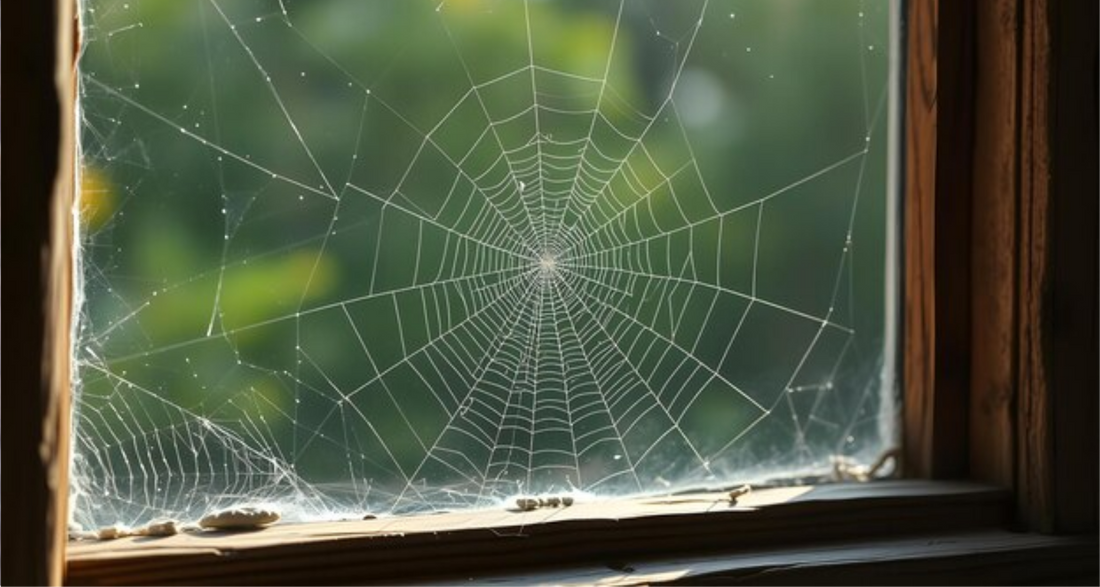
Home Spiders UK | What To Do With Spiders At Home
Share
Should You Let Spiders Stay in Your Home?
The Unexpected Wisdom of Spiders — And When to Show Them the Door
Most people see a spider in their home and instinctively reach for a shoe or a vacuum. But not all spiders are bad — in fact, many quietly serve your home by acting as natural pest control. They catch flies, mosquitoes, and other parasitic insects that can carry disease or simply be a nuisance.
But not all spiders work in your favour — and recently, a surprising moment revealed a powerful truth about telling the difference.
A Realization Worth Sharing
“Yesterday, I saw a spider in my home that had trapped a bumblebee in its web. That moment stopped me in my tracks.”
Bumblebees are among the most harmless and essential pollinators we have — and they pose no threat to your home. Seeing a spider kill one felt wrong. And it sparked a simple but important realization: You can tell whether a spider is a ‘good guest’ or a ‘bad guest’ by what’s in its web.
The Good Spiders: Your Silent Allies
Many spiders are solitary, shy, and avoid humans completely. These spiders tend to build webs near windows, ceilings, or corners — often catching:
Flies
Mosquitoes
Moths
Small gnats and fruit flies
If you look into their webs and see these pests, chances are that spider is doing more good than harm.
They act as quiet protectors — intercepting insects that spread bacteria, bite you, or ruin your food. Think of them as natural pest patrol.
Let them stay — in controlled areas.
Avoid disturbing their web unless it’s in a sensitive location.
Guide them away gently if they wander into personal zones.
The Problem Spiders: When Nature Oversteps
On the other hand, some spiders are more aggressive hunters. These may build larger, denser webs and hunt beneficial insects like:
Bumblebees
Butterflies
Pollinators
Ladybirds
If you find a spider web tangled with these innocent species, that’s a sign that balance is off. The spider has gone from pest control ally to predatory threat.
Some species may also:
Multiply quickly and create infestations
Build nests in lofts, garages, or rarely used rooms
Cause discomfort or anxiety for pets and children
Leave behind cobwebs and egg sacs
In such cases, it’s okay — even responsible — to gently relocate or repel them.
How to Check the Web for Clues
Take a closer look at what’s in the spider’s web ( safely ):
If you see flies, gnats, or mosquitoes – this is a beneficial spider.
If you see bees, butterflies, or other pollinators – this spider is out of place.
If you see thick clustering webs – you may have the early signs of an infestation.
If you're ever unsure — observe before you act. Most spiders don’t want confrontation and will quietly go about their business.
Spiders and Infestations
While a few spiders are helpful, an excess number could point to a deeper issue:
A growing population of prey ( flies, ants, moths, etc. )
High humidity and warm corners attracting nesting
Unsealed cracks or gaps where insects are getting in
Keeping a clean, well-sealed, and balanced home helps reduce the need for spiders to appear at all.
Final Thought: Balance Over Eradication
At PESTFREEHOME, we believe not every pest is bad — some just need guidance.
Let the helpful spiders live, remove or repel those that cross a line, and always aim to understand the natural flow in your home before disrupting it. Nature has its own balance — and sometimes, we’re just part of it.
Want to Know More?
We're working on more resources about understanding insect behaviour in your home — not just how to repel, but when to allow. Stay tuned.
And if you ever want to ask a question about a spider or insect you’re unsure about, just contact us. We’re not just here to sell — we’re here to share the wisdom and our understandings too.
